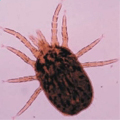@greennotify16
Profile
Registered: 5 months, 3 weeks ago
10 Things We Love About Female ADHD Symptoms Adult Female ADHD Symptoms Hyperactivity and impulsivity are the hallmarks of ADHD in childhood, which can lead to problems with academics and behavior. It's a condition that can last for a lifetime however, children tend to outgrow their symptoms. In adulthood, inattentive symptoms persist and cause problems at school or at work. These symptoms can be triggered or worsened by hormone fluctuations during menstrual cycles, pregnancy or menopause. Attentive Signs and symptoms The symptoms of inattention ADHD can be very frustrating for adults. They can affect relationships as well as productivity at work and school performance. For instance, you could be easily distracted, frequently lose things, or have trouble following directions. You might forget business appointments or meetings, leaving unfinished tasks. You might be overwhelmed by clutter in your home or office, and have difficulty remembering important details of events that took place in your life. It might be difficult to listen to others, and you might be suffering from what's known as the "thousand-yard stare," where you look at people but don't really hear them. Adults with inattention ADHD may also experience difficulties with their memory, particularly during times of hormonal changes such as menstrual cycles, pregnancy menopausal, perimenopausal and perimenopaus. This can be especially difficult for women who feel that their symptoms are being aggravated by these periods. You can make a difference in your life if you're diagnosed with inattention ADHD. It is important to set realistic goals for yourself and set a plan of action. You can use planners, reminder apps and post-it notes to keep track of your appointments or deadlines. Try to break up large projects into smaller tasks and work on them in small chunks at a time. Take breaks regularly to move around and refocus your focus. You can also request your school or employer for accommodations that can assist you in managing your symptoms, such as the ability to work from home, giving you extra time for assignments or tests or even providing notetaking assistance during meetings. Many places have policies that require them to make accommodations for people who have disabilities, including ADHD. Women with ADHD who don't receive a diagnosis may be left feeling angry or frustrated. They may blame their troubles on themselves, or believe that medical professionals or family members have ignored them. Many people are sad and depressed over the lack of opportunities and damaged relationships because they were not treated for their disorder. Research suggests that, in comparison to men and boys, girls and women with inattention ADHD are under-identified and underdiagnosed. This is primarily due the fact that their symptoms tend to camouflage. They can appear to be anxiety - or mood-related, which can cause clinicians to misdiagnose them. They also have more effective coping mechanisms than men, which can cover up the underlying ADHD symptoms. Hyperactive Signs and symptoms Hyperactive ADHD symptoms in girls and women may manifest as restlessness or difficulty being still. adult female adhd symptoms may be fidgety or constantly on the move, be very talkative, or struggle to concentrate in class or at work. Girls can also be susceptible to mood swings, and have difficulties controlling their emotions. They are often challenged to meet societal expectations for a woman's behavior and this can lead to feelings of inadequacy and chronic stress. While the symptom profile of females suffering from ADHD differs from those of males but the condition is a lifelong disorder. It's estimated that only about 30% of adults overcome their ADHD and women are less likely to achieve this than men. If you've been diagnosed of adult ADHD, your symptoms might get worse as you age and undergo hormonal changes. For instance, you may discover that your ADHD symptoms are more severe in puberty, at or around the menstrual cycle, as well as in perimenopause, the years before menopausal full-on. You might be noticing that you make more mistakes than usual, have difficulty managing your deadlines and tasks or forget to make appointments. If you have the inattentive-type of ADHD the symptoms may be heightened during perimenopausal or menopause. This is because estrogen decreases around ovulation and in the middle of your menstrual cycle which can lead to an increase in ADHD symptoms. These fluctuations could be the reason that many women are not diagnosed with ADHD in childhood and are instead left undiagnosed when they become adults. In the initial diagnosis, doctors will employ different methods, including interviews, rating scales and other methods to determine if a patient has ADHD. It is also crucial to take note of how you react and perceive your symptoms. Women and girls can hide or camouflage their ADHD symptoms to avoid being judged. This can lead to them being misdiagnosed as having anxiety or mood disorders. Males and males are more likely than women to be diagnosed with ADHD due to their disruptive behaviors. This is the reason why a majority of the initial ADHD studies were conducted with males and boys who were hyperactive. The symptoms of an impulse ADHD can make it difficult to control impulsive behavior such as picking up objects off the floor or hitting your fist on the wall. It can make it difficult to think before you act, which can cause problems at work or in school, when you must complete tasks or follow instructions without interruptions. As you enter adulthood, these trouble with impulse control and ability to plan and organise be more internalized and less apparent than they were when you were when you were a child. The obvious hyperactivity can turn into an inner sense of restlessness, and periods of being organised could coincide with a propensity for procrastination or feeling overwhelmed. Research shows that girls and women tend to cover up their ADHD symptoms more frequently than males and boys do. This is due to the fact that it is seen as more acceptable socially for men and boys to exhibit ADHD-related behaviors including hyperactive or impulsive symptoms. This can be a result of gender stereotypes, like the idea that boys are more raunchy and less organized than girls, which can make girls more likely to hide her ADHD symptoms in order to fit in with other people. The hormone fluctuations that happen during menstrual cycles or pregnancy can also exacerbate ADHD symptoms in females. This is due to the fact that estrogen levels decrease around ovulation, and it increases even more at the start of menstruation and causes symptoms to increase. This is why it's essential for women and girls with ADHD to be assessed by a health care provider or mental health professional if they are experiencing these symptoms. If you're suffering from ADHD, it's possible to reduce your symptoms. A combination of therapy, medication and lifestyle adjustments can make a difference. Regular exercise can improve your mood and boost neurotransmitters. It can also improve your energy levels and focus. Try doing some aerobics, sports or cardio exercises in your gym at home or in a local one. Sleeping enough is essential. A good night's rest can help reduce fatigue which is often a sign of ADHD. In addition, it is important to eat healthy and avoid eating foods that trigger ADHD symptoms in you. Internalizing Symptoms Women who suffer from ADHD might have difficulties in different areas of their lives. They are more prone to irritability and may develop coping strategies such as internalization. This can result in low self-esteem and a negative image of the body. It is essential to recognize and treat them as adults. For many, an diagnosis can be a lightbulb moment, providing an external explanation for the issues they've faced and helping them accept themselves more fully (Waite 2010). The intensity of symptoms can vary depending on hormone levels. They can improve during pregnancy and ovulation, and then worsen as women approach menopausal. In this period women may be unable to handle daily tasks and relationships, which can lead to feelings of dissatisfaction with life. Impulsive and forgetful behavior can affect relationships. Inadvertently forgetting birthdays, unfinished projects or not paying your bills on time, can make people feel like you're not worth it, leading to conflicts. People with ADHD tend to be extremely sensitive to rejection and have a difficult time controlling their emotions. This can lead to intense reactions even to perceived rejection or failure. Girls and women with ADHD can be sexually active at a later age than their peers, because of impulsivity and a desire to feel included and loved. They are more likely to become victims of intimate partner abuse and STIs because they don't insist that their partners use protection. They are also more likely to suffer from anxiety or depression co-occurring with it and may have a difficult to maintain friendships. While more research is needed to better understand the impact ADHD has on different genders, it is clear that females are more likely be undiagnosed, and to have a distinct experience with the disorder. However, it is possible to get a diagnosis and receive treatment which can improve relationships and set you up to be successful at work or school. In addition to medications the doctor may also suggest therapy, like cognitive behavior therapy which can help you manage your emotions and thoughts while swapping out negative thinking patterns for healthier ones.
Website: https://ellison-grau-2.hubstack.net/8-tips-to-enhance-your-adhd-symptoms-in-women-game
Forums
Topics Started: 0
Replies Created: 0
Forum Role: Participant




